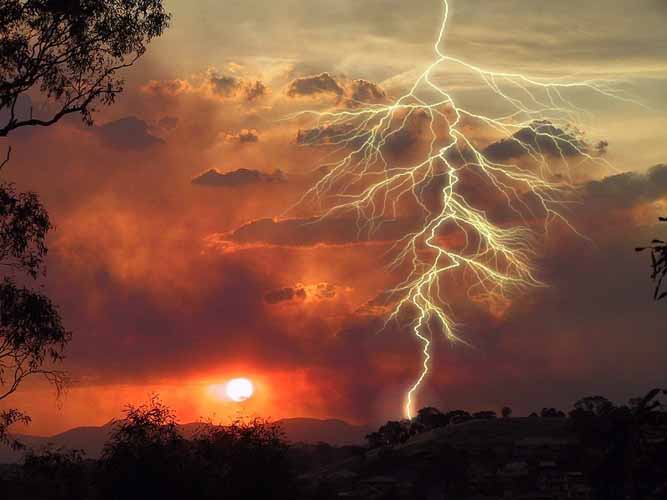

Lightning is a sudden electrostatic discharge that occurs during an electrical storm. This discharge occurs between electrically charged regions of a cloud (called intra-cloud lightning or IC), between that cloud and another cloud (CC lightning), or between a cloud and the ground (CG lightning). The charged regions in the atmosphere temporarily equalize themselves through this discharge referred to as a strike if it hits an object on the ground, and a flash, if it occurs within a cloud. Lightning causes light in the form of plasma, and sound in the form of thunder. Lightning may be seen and not heard when it occurs at a distance too great for the sound to carry as far as the light from the strike or flash.
Lightning occurs approximately 40–50 times a second worldwide, resulting in nearly 1.4 billion flashes per year.
Many factors affect the frequency, distribution, strength and physical properties of a "typical" lightning flash in a particular region of the world. These factors include ground elevation, latitude, prevailing wind currents, relative humidity, proximity to warm and cold bodies of water, etc. To a certain degree, the ratio between IC, CC and CG lightning may also vary by season in middle latitudes.
Because human beings are terrestrial and most of their possessions are on the Earth, where lightning can damage or destroy them, CG lightning is the most studied and best understood of the three types, even though IC and CC are more common types of lightning. Lightning's relative unpredictability limits a complete explanation of how or why it occurs, even after hundreds of years of scientific investigation.
A typical cloud to ground lightning flash culminates in the formation of an electrically conducting plasma channel through the air in excess of 5 kilometres (3.1 mi) tall, from within the cloud to the ground's surface. The actual discharge is the final stage of a very complex process. A typical thunderstorm has three or more strikes to the Earth per minute at its peak.
Lightning primarily occurs when warm air is mixed with colder air masses, resulting in atmospheric disturbances necessary for polarizing the atmosphere. However, it can also occur during dust storms, forest fires, tornadoes, volcanic eruptions, and even in the cold of winter, where the lightning is known as thundersnow. Hurricanes typically generate some lightning, mainly in the rainbands as much as 160 kilometres (99 mi) from the center.
The science of lightning is called fulminology, and the fear of lightning is called astraphobia.
Scientists Reveal Where Deadly Lightning Strikes Most in The US
Science Alert - March 2, 2024
Study finds the West is best to spot UFOs
PhysOrg - February 28, 2024

Map Reveals Where In The US Is Best To Spot UFOs In the Sky
IFL Science - February 28, 2024
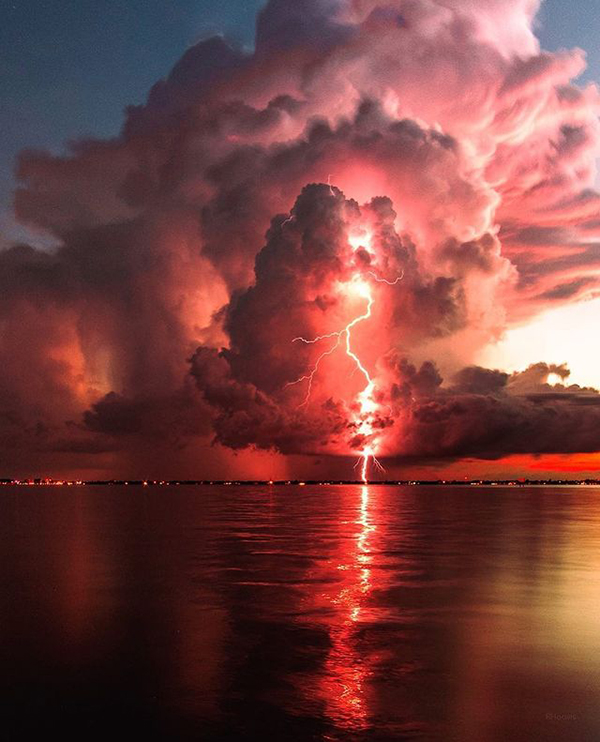
This Tiny 'Spark' Could Help Solve The Mystery of Lightning's Origins Science Alert - November 20, 2025
Scientist captures tiny particles for clues on what sparks lightning PhysOrg - November 20, 2025
The first process in the generation of lightning generation is the separation of positive and negative charges within a cloud. Ice crystals inside cumulonimbus clouds rub against one another due to the strong updrafts in these clouds, thus building up a strong static charge.
Positively charged crystals tend to rise to the top causing the cloud top to build up a positive static charge and negatively charged crystals and hailstones drop to the middle and bottom layers of the cloud building up a negative static charge. Cumulonimbus clouds that do not produce enough ice crystals usually fail to produce enough static electricity to cause lightning.
Lightning can also occur as a result of volcanic eruptions or violent forest fires which generate sufficient dust to create a static charge.
The second process is the build up of positive charges on the ground beneath the clouds. The Earth is normally negatively charged with respect to the atmosphere. But as the thunderstorm passes over the ground, the negative charges at the bottom of the cumulonimbus cloud cause the positive charges on the ground to gather along the surface for several miles around the storm and becomes concentrated in vertical objects including trees and tall buildings. If you feel your hair stand up on end in a lightning storm beware. The negative charges from the cloud are pulling the positive charges inside your body to the top of your head and you could be in danger of being struck.
The third process is the generation of the lightning. When sufficient negatives and positives gather in this way, an electrical discharge occurs within the clouds or between the clouds and the ground, producing the bolt.
A bolt of lightning usually begins when an invisible negatively charged stepped leader stroke is sent out from the cloud. As it does so, a positively charged streamer is sent out from the positively charged ground or cloud. When the leader and streamer meet, the electrical discharge takes place up the streamer into the cloud. This return stroke is the most luminous part of the strike, and the part that is really visible.
Most lightning strikes usually last about a quarter of a second. Sometimes several strokes will travel up and down the same leader strike, causing a flickering effect. Thunder is caused when the discharge rapidly super heats the air around the strike, causing a shock wave to be sent out.
Research published in 2002 indicates that every lighting bolt also causes a similar but weaker electrodynamic pulse in the mesosphere, located 50 to 80 km (31 to 53 miles) above the earth, and above into the thermosphere.
This type of lightning is known as negative lightning due to the discharge of negative charge from the cloud, and accounts for over 95% of all lightning.
Statistics: an average bolt of negative lightning carries a current of 30 kiloamperes, transfers a charge of 5 coulombs, has a potential difference of about 100 megavolts, and lasts a few milliseconds.
Positive lightning makes up less than 5% of all lightning. It occurs when the stepped leader forms at the positively charged cloud tops, with the consequence that a positively charged streamer issues from the ground. The overall effect is a discharge of positive charges to the ground.
Research carried out after the discovery of positive lightning in the 1970s showed that positive lightning bolts are typically six to ten times more powerful than negative bolts, last around ten times longer, and can strike several miles distant from the clouds. During a positive lighting strike, huge quantities of ELF and VLF radio waves are generated.
As a result of their power, positive lightning strikes are considerably more dangerous. At the present time aircraft are not designed to withstand such strikes, since their existence was unknown at the time standards were set, and the dangers unappreciated until the destruction of a glider in 1999. It has since been suggested that it may have been positive lightning that caused the crash of Pan Am flight 214 in 1963. Positive lighting is now also thought to be responsible for many forest fires.
Positive lightning has also been shown to trigger the occurrence of upper atmospheric lightning. It tends to occur more frequently in winter storms and at the end of a thunderstorm.
Statistics (based on a small number of measurements): an average bolt of positive lightning carries a current of 300,000 amperes, transfers a charge of up to 300 coulombs, has a potential difference up to 1 gigavolt (a thousand million volts), and lasts for tens or hundreds of milliseconds.
Bipolar lightning occurs when bolts of negative and positive lightning alternately use the same channel through the air.
Some lightning strikes take on particular characteristics, and scientists and the public have given names to these various types of lightning.
Intracloud lightning is the most common type of lightning which occurs completely inside one cumulonimbus cloud, jumping between different charged regions within the cloud. Intracloud lightning is commonly known as sheet lightning because it lights up the cloud and the surrounding sky with an apparent sheet of light. One special type of intracloud lightning is commonly called an anvil crawler. Discharges of electricity in anvil crawlers travel up the sides of the cumulonimbus cloud branching out at the anvil top.
Cloud-to-ground lightning is a great lightning discharge between a cumulonimbus cloud and the ground initiated by the downward-moving leader stroke. This is the second most common type of lightning. One special type of cloud-to-ground lightning is anvil lightning, a form of positive lightning, since it emanates from the anvil top of a cumulonimbus cloud where the ice crystals are positively charged, and is a form of positive lightning. In anvil lightning, the leader stroke issues forth in a nearly horizontal direction till it veers toward the ground. These usually occur miles ahead of the main storm and will strike without warning on a sunny day. They are signs of an approaching storm.
Another special type of cloud-to-ground lightning is bead lightning. This is a regular cloud-to-ground stroke that contains a higher intensity of luminosity. When the discharge fades it leaves behind a string of beads effect for a brief moment in the leader channel. A third special type of cloud-to-ground lightning is ribbon lightning. These occur in thunderstorms where there are high cross winds and multiple return strokes. The winds will blow each successive return stroke slightly to one side of the previous return stoke, causing a ribbon effect. The last special type of cloud-to-ground lightning is staccato lightning which is nothing more than a leader stroke with only one return stroke.
Cloud-to-cloud lightning is a somewhat rare type of discharge lightning between two or more completely separate cumulonimbus clouds.
Ground-to-cloud lightning is a lightning discharge between the ground and a cumulonimbus cloud from an upward-moving leader stroke. Most ground-to-cloud lightning occurs off of tall buildings, mountains and towers.
Heat lightning is nothing more than the faint flashes of lightning on the horizon from distant thunderstorms. Heat lightning was named because it often occurs on hot summer nights. Heat lightning can be an early warning sign that thunderstorms are approaching. In Florida, heat lightning is often seen out over the water at night, the remnants of storms that formed during the day along a sea breeze front coming in from the opposite coast.
A lightning channel is the irregular path through the air along which a lightning discharge occurs. When the discharge begins, a so-called “leader” seeks out the path of least resistance between the source of the charge and either the ground, another charge center or the surrounding air. Lightning strikes the Earth every day average about 100 times per second. - Weather.com
Reports by scientists of strange lightning phenomena above storms date back to at least 1886, however it is only in recent years that fuller investigations have been made.
Sprites are now well documented electrical discharges that occur high above the cumulonimbus cloud of an active thunderstorm. They appear as luminous reddish-orange neon-like flashes, last longer than normal lower stratospheric discharges (typically around 17 milliseconds), and are usually spawned by discharges of positive lightning between the cloud and the ground.
Sprites usually occur in clusters of two or more simultaneous vertical discharges, typically extending from 65 to 75 km (40 to 47 miles) above the earth, with or without less intense filaments reaching above and below. Sprites are preceded by a sprite halo that forms due to heating and ionization less than 1 milisecond before the sprite.
Sprites were first photographed on July 6, 1989, by scientists from the University of Minnesota and named after the mischievous sprites in the plays of Shakespeare. They are caused by the electric field of a lighting stroke - as opposed to the electromagnetic pulse that causes a sprite.
Unveiling the mysterious 'red sprite' lightning strikes over the Himalayas PhysOrg - March 18, 2025
![]()
Have you ever heard of -or even seen - red lightning? These are not animated characters but real atmospheric phenomena known as electrical discharges that occur high above thunderstorms. Scientists refer to them as "red sprites," named for their jellyfish-like appearance and vivid red flashes. Now, imagine witnessing these mesmerizing displays over the world's highest mountain range - the Himalayas.
Eerie, ultra-detailed photo of a lightning 'sprite' exposes one of nature's least understood phenomena Space.com - September 6, 2023
An astronomer recently captured one of the most detailed-ever shots of a rare type of upward-shooting red lightning, known as a sprite, which briefly hovered in the air like a gigantic jellyfish during a thunderstorm over central Europe.
Rarely Seen 'Red Sprites' Have Been Glimpsed in The Sky Above Chile Science Alert - August 25, 2022
Red sprites are large-scale electrical discharges that occur high above thunderstorm clouds, usually triggered by the discharges of positive lightning between an underlying thundercloud and the ground. However, the red sprites appear high in Earth's atmosphere, sometimes 50-90 kilometers (31 to 55 miles) in altitude. People have been telling folktales for centuries about mysterious red lights in the sky, which were usually dismissed by experts.
Elves appear as a dim, flattened expanding glow around 400 km (250 miles) in diameter that lasts for, typically, just one millisecond. They occur in the ionosphere 100 km (60 miles) above the ground over thunderstorms. Their color was a puzzle for some time, but is now believed to be a red hue.
Elves were first recorded on another shuttle mission, this time recorded off French Guiana on October 7, 1990. Elves is a frivolous acronym for Emissions of Light and Very Low Frequency Perturbations From Electromagnetic Pulse Sources. This refers to the process by which the light is generated; the excitation of nitrogen molecules due to electron collisions (the electrons having been energized by the electromagnetic pulse caused by a positive lightning bolt.
On September 14, 2001, scientists at the Arecibo Observatory photographed a huge jet double the height of those previously observed, reaching around 80 km (50 miles) into the atmosphere. The jet was located above a thunderstorm over the ocean, and lasted under a second. Lightning was initially observed traveling up at around 50,000 m per second in a similar way to a typical blue jet, but then divided in two and speeded to 250,000 m / second to the ionosphere, where they spread out in a bright burst of light.
On July 22, 2002 five gigantic jets between 60 and 70 km (35 to 45 miles) in length were observed over the South China Sea from Taiwan, reported in Nature. The jets lasted under a second, with shapes likened by the researchers to giant trees and carrots.
Researchers have speculated that such forms of upper atmospheric lightning may play a role in the formation of the ozone layer.
An enormous red circle briefly appeared in the Italian sky last week. This fleeting event, lasting a fraction of a second, looks like the dusting of a crimson doughnut but in reality, is a rare atmospheric event known as an ELVE IFL Science - April 5, 2023
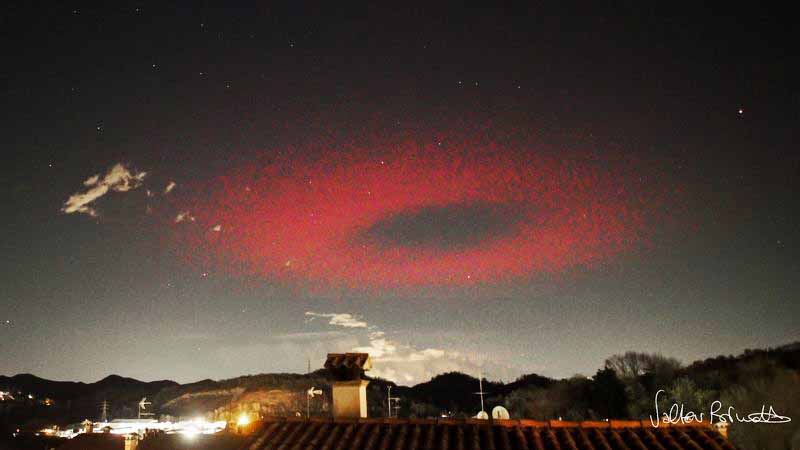
An enormous red circle briefly appeared in the Italian sky last week. This fleeting event, lasting a fraction of a second, looks like the dusting of a crimson doughnut but in reality, is a rare atmospheric event known as an ELVE. ELVES are an Emission of Light and Very Low-Frequency perturbations due to Electromagnetic Pulse Sources, one of those backronyms that makes you roll your eyes so hard you fear they might get stuck.
Giant "ELVE" appears over Europe - Spaceweather.com - April 2, 2017
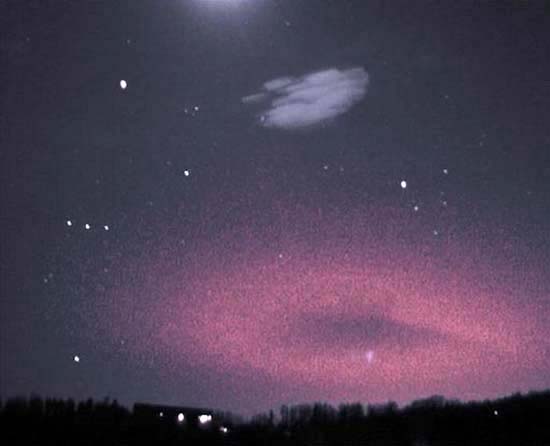
High above a thunderstorm in the Czech republic, an enormous ring of light appeared in the night sky. Using a low-light video camera, amateur astronomer Martin Popek of Nydek photographed the 300 km-wide donut hovering near the edge of space. It appeared for just a split second alongside the constellation Orion. This is an example of an ELVE (Emissions of Light and Very Low Frequency Perturbations due to Electromagnetic Pulse Sources). First seen by cameras on the space shuttle in 1990, ELVEs appear when a pulse of electromagnetic radiation from cloud-to-ground lightning propagates up toward space and hits the base of Earth's ionosphere. A faint ring of deep-red light marks the broad 'spot' where the EMP hits. ELVEs often appear alongside red sprites, which are also sparked by strong lightning. ELVEs are elusive - and that's an understatement. Blinking in and out of existence in only 1/1000th of a second, they are completely invisible to the human eye. For comparison, red sprites tend to last for hundredths of a second and regular lightning can scintillate for a second or more. Their brevity explains why ELVEs are a more recent discovery than other lightning-related phenomenon.
All lightning is streak lighting. This is nothing more than the return stroke, the visible part of the lightning stroke. Because most of these strokes occur inside a cloud, we do not see many of the individual return strokes in a thunderstorm.
Lightning has been triggered in several instances. Lightning struck the Apollo 12 soon after takeoff, and has struck soon after thermonuclear explosions. For more information, see triggered lightning.
Lightning has been observed on other planets, such as Venus and Jupiter, and electrical discharges between Jupiter and Io often occur.
Lightning on Jupiter is estimated to be 100 times as powerful, but fifteen times rarer, than that which occurs on Earth.
Lightning on Venus occurs so often that it is speculated that, were colonization to ever occur on Venus, lightning would be a primary power source.
Cassini sees lightning in Saturn's atmosphere BBC - July 23, 2004
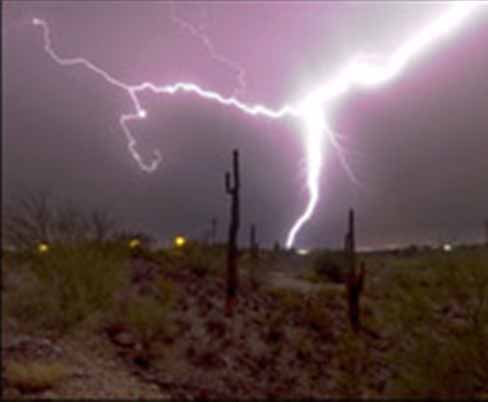
A bolt of lightning can reach temperatures approaching 28,000 kelvin (or about 50,000 degrees Fahrenheit) in a split second. This is many times hotter than the surface of the sun. A result of this is that lightning strikes that hit a loose soil or sandy region of the ground may fuse the soil or sand into channels called fulgurites.
These fulgurites are sometimes found under the sandy surfaces of beaches and golf courses or in desert regions. It is one evidence that lightning spreads out into branching channels when it strikes the ground.
Lightning is responsible for approximately 100 deaths a year in the United States alone. Lightning ranks second only to floods for storm related casualties in the U.S. every year. Many of these deaths could be prevented if basic precautions were taken when thunderstorms are expected in an area. Listening to a radio to keep up to date on storms in the area is the best way to prepare for safety.
One way to prepare for lightning safety is to install a device known as lightning conductor (commonly known as a lightning rod) for preventing damage by lightning to a building. A lightning conductor is a metal spike that is connected to earth by a low-resistance path. Should lightning strike a building, the current will travel through the conductor rather than through the fabric of the building, causing less damage.
Electrical equipment can be protected from lightning by a lightning arrester. This is a device that contains one or more gas-filled spark gaps between the equipment's cables and earth. Should lightning strike one of the cables, the high voltage will cause the gas in the spark gap to break down and become a conductor, providing a path for the lightning to reach the ground without passing through the equipment.
No place is truly 100% safe in a thunderstorm, but some places are more safe than others. Larger, better constructed structures are better than smaller or more open structures. Fully enclosed metal vehicles with the windows rolled up are good shelters, providing that no contact is made with any exposed metal inside or outside the vehicle.
When outside, avoid the following:
If you find yourself trapped in an open area during a storm, position yourself close to the ground by squatting with your feet close together and on the balls of your feet. Crouch in a ditch if possible. Avoid proximity to other people (minimum 5 meters or 15 feet). Since lightning spreads when it hits the ground, you want to minimize as much surface area between you and the ground. Remember, humans are good conductors of electricity, lightning tends to strike at the highest thing in an area, because electricity will always take the path of least resistance.
How Can You Avoid Being Struck By Lightning? ABC - July 18, 2004
When inside avoid the following:
anything to do with the use of water
being near windows and doors
using electrical appliances that plug into the wall
avoid contact with conductive surfaces with exposure to the outside such as metal door or window frames, electrical wiring, cable TV wiring, etc.
Lightning is often considered a divine or supernatural phenomenon. In many mythologies, it plays a role, and often have an affiliation with a certain god.
In many cultures, lightning has been viewed as part of a deity or a deity in and of itself.
In Native American mythology, the Ani Hyuntikwalaski ("Thunder Beings") are beings that cause lightning fire in a hollow sycamore tree.
In Greek mythology lightning and thunder are weapons of Zeus, given from Cyclopes.
In Norse mythology Odin's spear Gungnir is an embodiment of lightning. In addition, his son, Thor is specifically the God of Thunder and Lightning
In Mayan mythology Huracan is sometimes represented as three lightning bolts.
In the traditional religion of the African Bantu tribes, lightning is a sign of the ire of the gods.
Verses in the Jewish religion and in Islam also ascribe supernatural importance to lightning. In Christianity, the Second Coming of Jesus is compared to lightning.
The expression "Lightning never strikes twice (in the same place)" is similar to "Opportunity never knocks twice" in the vein of a "once in a lifetime" opportunity, i.e., something that is generally considered improbable.
Lightning occurs frequently and more so in specific areas. Since various factors alter the probability of strikes at any given location, repeat lightning strikes have a very low probability (but are not impossible). Similarly, "A bolt from the blue" refers to something totally unexpected.
Some political parties use lightning flashes as a symbol of power, such as the People's Action Party in Singapore, the British Union of Fascists during the 1930s, and the National States' Rights Party in the United States during the 1950s. The Schutzstaffel, the paramilitary wing of the Nazi Party, used the Sig rune in their logo which symbolizes lightning. The German word Blitzkrieg, which means "lightning war", was a major offensive strategy of the German army during World War II.
In French and Italian, the expression for "Love at first sight" is coup de foudre and colpo di fulmine, respectively, which literally translated means "lightning strike".
Some European languages have a separate word for lightning which strikes the ground (as opposed to lightning in general); often it is a cognate of the English word "rays".
The name of New Zealand's most celebrated thoroughbred horse, Phar Lap, derives from the shared Zhuang and Thai word for lightning.
The bolt of lightning in heraldry is called a thunderbolt and is shown as a zigzag with non-pointed ends. This symbol usually represents power and speed.
The lightning bolt is used to represent the instantaneous communication capabilities of electrically powered telegraphs and radios. It was a commonly used motif in Art Deco design, especially the zig-zag Art Deco design of the late 1920s.
The lightning bolt is a common insignia for military communications units throughout the world. A lightning bolt is also the NATO symbol for a signal asset. The Unicode symbol for lightning is < U+2607
In movies and comics of the contemporary U.S. and many other countries, the lightning is often employed as an ominous, dramatic sign. It may herald a waking of a great evil or emergence of a crisis. Various novels and role playing games with fantasy tint involves wizardry of lightning bolt, weapon embodying the power of lightning, etc. The comic book character Billy Batson changed into the superhero Captain Marvel by saying the word, "Shazam!" which called down a bolt of magic lightning to strike to change.
What's the longest lightning bolt ever recorded? 515-mile-long lightning bolt that spanned 5 states is the longest on record Live Science - August 1, 2025
According to the U.K. Met Office, lightning strikes the planet up to 1.4 billion times a year, or an estimated 44 times every second. And it's more than just a light show: Lightning plays a critical role in keeping Earth's electrical balance in check; aids in fixing nitrogen, thereby helping plants grow; and potentially even helps to clear the atmosphere of pollutants.
Lightning on Earth is sparked by a powerful chain reaction from outer space, simulations show Live Science - July 31, 2025

The energy needed for thunderstorms could come from an avalanche of electrons seeded by extraterrestrial cosmic rays, a new study claims. Scientists already knew that lightning is an electrical discharge between thunderclouds and Earth's surface, but exactly how storm clouds obtain an electric field powerful enough to hurl a bolt has remained a mystery for centuries. Now, a new study has used computer models to reveal that lightning strikes as the result of a powerful chain reaction that begins in outer space.
Weather-tracking advances are revealing astonishing extremes of lightning PhysOrg - July 31, 2025

It was a single lightning flash that streaked across the Great Plains for 515 miles, from eastern Texas nearly all the way to Kansas City, setting a new world record.
World-First Study Reveals How Lightning Sparks Gamma-Ray Flashes Science Alert - May 22, 2025

The very moment two electrical currents slam together to form a lightning bolt has been captured, revealing for the first time the role this process plays in generating powerful gamma rays right here on Earth. The observation confirms the hypothesis that the terrestrial gamma-ray flashes, or TGFs, associated with lightning are the result of a powerful electrical field accelerating electrons to nearly the speed of light.
Spectacular photo taken from ISS shows 'gigantic jet' of upward-shooting lightning towering 50 miles over New Orleans Live Science - March 4, 2025

The night before Mardi Gras ...
Lightning Really Does Strike Twice, And This Is Where It Happens Most Science Alert - April 6, 2024
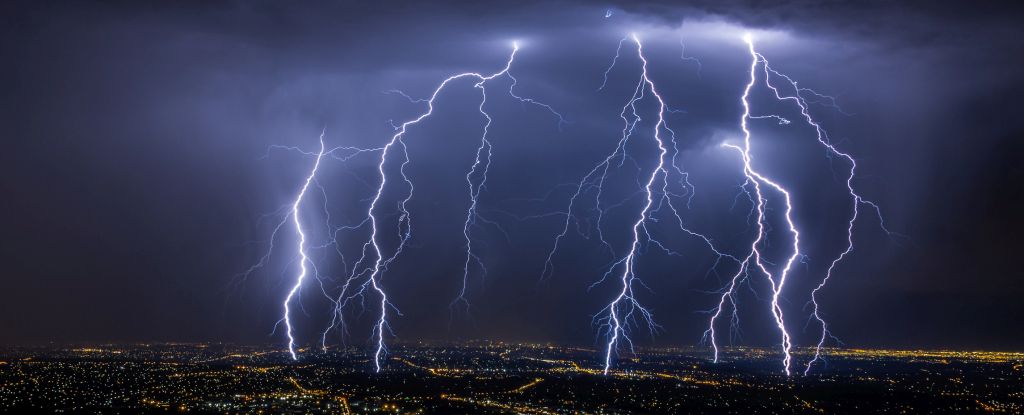
Catalonia (North East of Spain) and Barrancabermeja (Central Colombia). RLS in both regions are typically found to be related to tall structures, mountain peaks and steep terrain.
For The First Time, Scientists Have Bent Lightning Science Alert - October 6, 2023
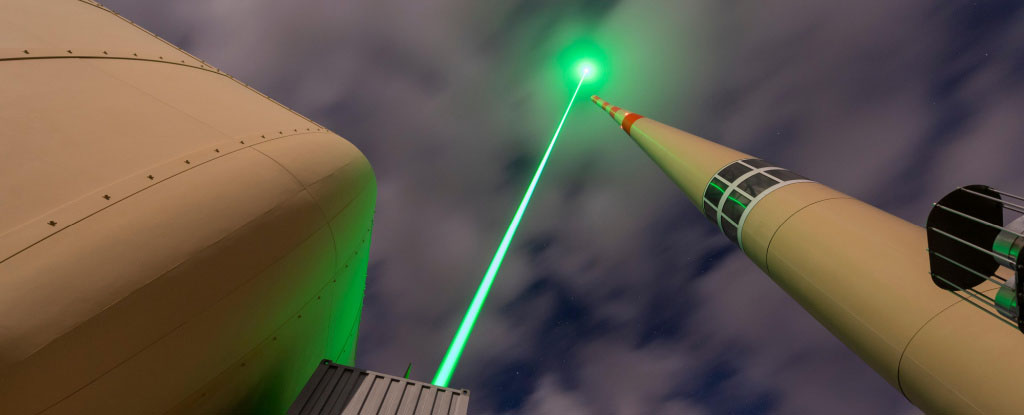
Researchers were able to deflect lightning using a powerful laser shot into the sky - a scientific first. A powerful laser was able to deflect a lightning bolt almost 200 feet before it hit a lightning rod, greatly improving the rod's function.
Incredible Time-Lapse Lightning Photography Lights Up Turkish Sky IFL Science - June 27, 2023
Dark purple sky with loads of bright white lightning bolts striking the sea. Yellow lights from houses visible on the edge of the water.
4 Tornadoes Hit NJ as Violent Thunderstorms Thrashed NYC Area BBC - April 1, 2023
Dramatic lightning bolts struck the Freedom Tower in New York City.
Lightning Strikes Create a Strange Form of Crystal Rarely Seen in Nature Science Alert - January 30, 2023
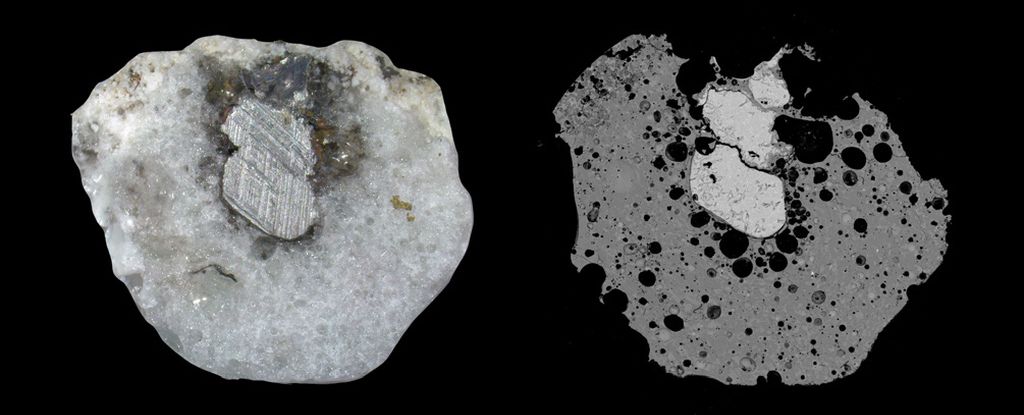
Inside a piece of fulgurite - or 'fossilized lightning' - created by a powerful bolt of electricity traveling into and fusing sand, scientists have found a quasicrystal, an arrangement of matter once thought to be impossible. This discovery suggests there are previously unknown formation pathways for quasicrystals, opening up new avenues for their synthesis in the laboratory. The current investigation was designed to explore a different possible nature-inspired mechanism for generating quasicrystals: electrical discharge.
Deflecting lightning with a laser lightning rod PhysOrg - January 16, 2023
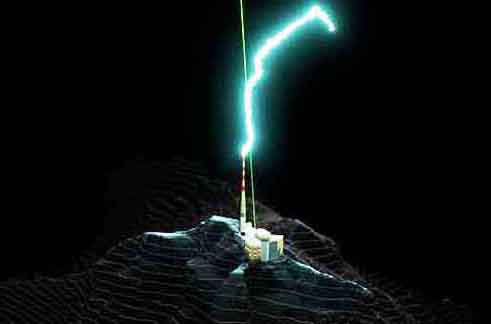
Forest fires, power cuts and damaged infrastructure…lightning fascinates and destroys in equal measure, causing as many as 24,000 deaths a year worldwide not to mention widespread destruction. Even today, the lightning rod invented by Benjamin Franklin is the best form of protection. And yet, these rods do not always provide optimal protection for sensitive sites.
Firing a Laser Into The Sky Can Divert Lightning, Experiment Shows Science Alert - January 16, 2023
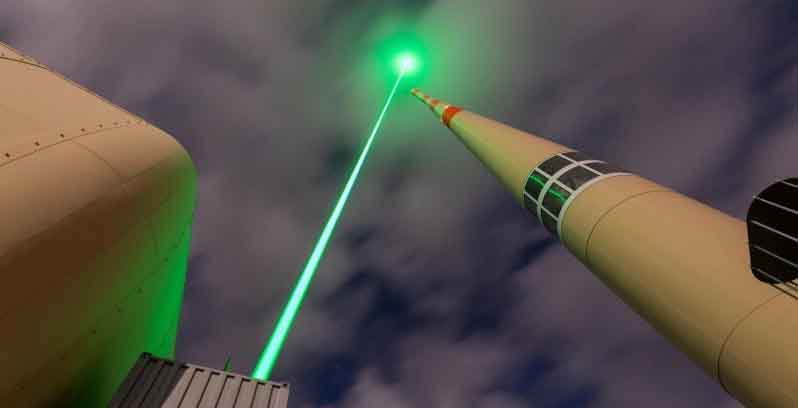
Beaming a laser into the sky could avert lightning strikes, according to a new study from a team of scientists who experimented with the lasers atop a Swiss mountain where a great big metal telecommunications tower stands.
Why does lightning zigzag? At last, an answer to the mystery PhysOrg - December 2, 2022
Despite its frequency - about 8.6 million lightning strikes occur worldwide every day - why lightning proceeds in a series of steps from the thundercloud to the earth below has remained a mystery. The intense electrical fields in thunderclouds excite electrons to have enough energy to create what are known as "singlet delta oxygen molecules." These molecules and electrons build up to create a short, highly conducting step, which lights up intensely for a millionth of a second. At the end of the step, there is a pause as the build-up happens again, followed by another bright, flashing leap. The process is repeated again and again. An increase in extreme weather events means lightning protection is increasingly important. Knowing how a lightning strike is initiated means we can work out how to better protect buildings, airplanes and people. Also, while the use of environmentally friendly composite materials in aircraft is improving fuel efficiency, these materials increase the risk of lightning damage, so we need to look at additional protection.
'Gigantic jet' that shot into space may be the most powerful lightning bolt ever detected Live Science - August 11, 2022
A lightning bolt over Oklahoma was one of the rarest and most powerful on Earth. The sky turns dark, a heavy rain falls and a bolt of lightning crackles through the air. But instead of striking down toward the ground, or zipping sideways between clouds, this lightning bolt does something unexpected: It blasts straight upward from the top of the cloud, shooting 50 miles (80 kilometers) into the sky, grazing the lower edge of space. Bolts like these are called gigantic jets. They are the rarest and most powerful sort of lightning, occurring as few as 1,000 times a year and emitting more than 50 times as much energy as a typical lightning bolt — and now, scientists have just detected the single most powerful gigantic jet yet.
World's longest lightning bolt lasted for 8.5 seconds and stretched more than 477miles across the skies over Texas, Louisiana and Mississippi - 37 miles longer than the previous record Daily Mail - February 1, 2022
A massive bolt of lightning that stretched almost 500 miles across three US states has set a new world record for the longest 'megaflash' ever recorded. It started close to the city of Wiggins in Mississippi at 09:32 ET on April 29, 2020 and cut across the skies of Louisiana and Texas towards Freeport on the Gulf of Mexico, lasting a total of eight-and-a-half seconds.
770-km US megaflash sets new lightning record PhysOrg - February 1, 2022
The new record for the longest detected megaflash, measured in the southern US on April 29, 2020, stretched a full 768 kilometres, or 477.2 miles, across Mississippi, Louisiana and Texas. That is equivalent to the distance between New York City and Columbus, Ohio, or between London and the German city of Hamburg, the UN's World Meteorological Organization (WMO) pointed out in a statement. That lightning bolt zig-zagged some 60 kilometres further than the previous record, set in southern Brazil on October 31, 2018.
In the chaos of a thunderstorm, upward moving lightning occasionally springs from the tops of tall structures PhysOrg - April 12, 2021
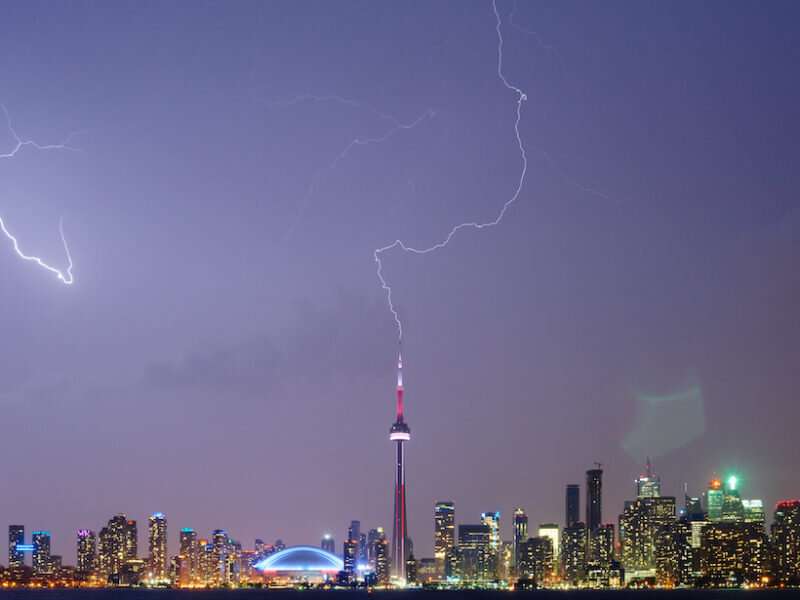
Scientists don't fully understand how upward lightning is triggered; it is likely a combination of multiple environmental factors, such as the background electric field and the structure's height. A new study investigate how ambient lightning events near tall structures may trigger upward lightning.
Rare red sprite and blue jet create otherworldly light show above Hawaii Live Science - March 3, 2021
![]()
Sprites and jets are fleeting atmospheric phenomena, hard enough to witness, let alone photograph. But a new image from an observatory in Hawaii captures both a red sprite and a blue jet in the same shot. The photo, released on Feb. 24, comes courtesy a "cloud cam" at the Gemini North telescope, part of the International Gemini Observatory located on Maunakea. Sprites and jets are upper-atmospheric phenomena caused by electrical discharges. Sprites, which are typically reddish-orange and sometimes blue-green, occur in the mesosphere, between 30 and 50 miles (50 and 80 kilometers) in altitude. They're often triggered by regular, lower-altitude lightning, but are much cooler in temperature. They're also sometimes shaped like jellyfish. Blue jets also occur at high altitude, triggered by a discharge of electricity from the positively-charged upper portion of a storm cloud to the negatively-charged cloud top, according to a paper published Jan. 20 in the journal Nature. They typically appear as blue streamers shooting spaceward.
The mysterious luminescence phenomena of earthquake lightning PhysOrg - September 28, 2020
Were you aware that earthquakes are sometimes associated with luminescence, called earthquake lightning? This phenomenon had been documented throughout history, such as between 1965 and 1967, the Matsushiro earthquake swarm caused the surrounding mountain to flicker with light multiple times. In 1993 when an earthquake caused a tsunami off the coast in Southwest Hokkaido which caused 5 boats resting at shore to instantly ignite and burn. Various models have been proposed to explain earthquake lightnings, and it seems as though various factors contribute to such light emissions.
400-mile-long lightning bolt over Brazil is biggest in recorded history Live Science - June 29, 2020
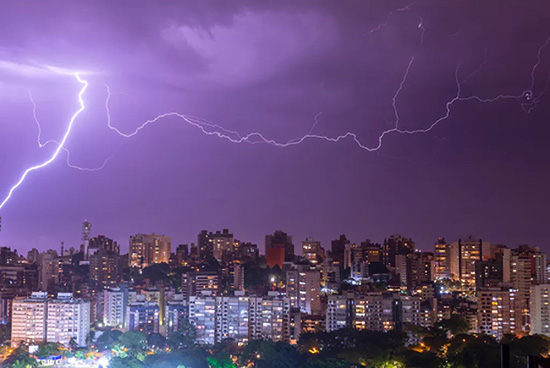
On Halloween in 2018, the sky tore open above Brazil. A single gargantuan lightning bolt sliced through the atmosphere over the country's southern tip, stretching more than 440 miles (700 kilometers) from the Atlantic coast into the edge of Argentina. According to a new analysis from the World Meteorological Organization (WMO), this epic "megaflash" was the single longest lightning bolt ever recorded.
700-km Brazil 'megaflash' sets lightning record: UN PhysOrg - June 25, 2020
The UN's weather agency announced Thursday the longest lightning bolt on record—a single flash in Brazil on October 31, 2018 that cut the sky across more than 700 kilometers.
Hunting mystery giant lightning from space BBC - April 7, 2018
Thunderstorms are some of the most spectacular events in nature, yet what we can see from the surface of our planet is only the beginning. There are bizarre goings on in Earth's upper atmosphere, and a new mission aims to learn more about them. Launched to the International Space Station on Monday, the Atmosphere-Space Interactions Monitor (ASIM) will observe the strange electrical phenomena that occur above thunderstorms.
Mystery red sprites and blue jets are spotted in space: Astronaut captures best ever images of the strange sights from the ISS Daily Mail - February 9, 2017
For years, their existence has been debated - elusive electrical discharges in the upper atmosphere that sport names such as red sprites, blue jets, pixies and elves. But an astronaut has confirmed the displays do exist, capturing stunning footage of them from the International Space Station. New findings have been published which suggest that the electrical discharges may unsettle the chemistry of the stratosphere, with possible implications for the Earth's radiation balance.
France strikes with longest-lasting lightning bolt PhysOrg - September 16, 2016
The UN World Meteorological Organization on Friday announced that France held the record for longest-lasting lightning bolt, with a flash on August 30, 2012 in the southeast of France lighting up the sky for a full 7.74 seconds. The horizontal bolt travelled 200 kilometres (125 miles). It was a "cloud-to-cloud" discharge. France was bested, however, in the distance stakes by the US. A lightning strike on June 20, 2007 in the state of Oklahoma covered a distance of 321 kilometres, the WMO said.
Shocking News: World's Longest Lightning Bolt Was Nearly 200 Miles Live Science - September 16, 2016
When the world's longest lightning bolt struck over Oklahoma in 2007, it traveled about three-quarters of the length of the state, according to the World Meteorological Organization, which recently announced the electrifying new record.
The lightning bolt traveled 199.5 miles (321 kilometers) on June 20, 2007, the World Meteorological Organization (WMO) said. The organization also confirmed the longest duration for a single flash of lightning: 7.74 seconds, for a flash that occurred over Provence-Alpes-Cote d'Azur, France, on Aug. 30, 2012. The two announcements mark the first time that lightning has been included in the official WMO World Weather & Climate Extremes Archive, which documents records for heat, cold, wind speed, rainfall and other climate events.
Rare images of red sprites captured at ESO PhysOrg - February 4, 2015
The photo was captured from ESO's Paranal Observatory. A few days earlier during the early morning hours of Jan. 20 Petr captured another series of sprites from the La Silla site, generated by a storm over Argentina over 310 miles (500 km) away. So-named because of their elusive nature, sprites appear as clusters of red tendrils above a lighting flash, often extending as high as 55 miles (90 km) into the atmosphere. The brightest region of a sprite is typically seen at altitudes of over 40-45 miles (65-75 km).
Climate change will make lightning strike more frequent BBC - November 13, 2014
Global warming will significantly increase the frequency of lightning strikes, according to US research. The teams says they have calculated how much each extra degree in temperature will raise the frequency of lightning. For every two lightning strikes in 2000, there will be three lightning strikes in 2100.
Incredible Technology: How to Map a Lightning Strike Live Science - October 14, 2013
Some scientists literally spend their time waiting for lightning to strike. Lightning is the second highest cause of annual weather-related deaths in the United States, according to the National Weather Association. It starts fires, causes power outages and wreaks havoc on electronics systems. The science of lightning detection has improved dramatically since Ben Franklin flew his kite in a thunderstorm in 1752. Researchers can now predict conditions that precede a bolt from the blue, and track the location and strength of a strike while it's occurring. There is no more iconic storm image than the brilliant white forks of lightning snaking their way across a menacing sky. But most of it happens too fast for the human eye to glimpse, so researchers use high-speed cameras to spy how the lightning races between sky and Earth.
When lightning first develops, it generally sends a bolt called a step leader down toward the ground, branching in seemingly random directions. When the bolt gets close to the ground, it creates an intense electric field, which causes upward streamers that meet it midair. After the streamers attach to the main bolt, the lightning charges down again in a dart leader, which is the bright part observers on the ground actually see.
Otherworldly Photos Capture Mysterious Phenomena in Upper Atmosphere Wired - July 23, 2013
In the blink of an eye, an enormous bright red light flashes above a thundercloud, spreading energetic branches that extend five times taller than Mount Everest and look like jellyfish tendrils and angel's wings. These mysterious phenomena are known as Transient Luminous Events (TLEs), and are usually invisible to the naked eye because they happen on millisecond timescales, too fast to be seen. They occur between 50 to 100 kilometers above the ground, a long-ignored area of the atmosphere that is too high for aircraft but too low for satellites to investigate. There, the thin air interacts with strong electrical fields to ionize molecules and create arcing plasmas.
Lightning sprites are out-of-this-world PhysOrg - November 21, 2011
Only a few decades ago, scientists discovered the existence of "sprites" 30 to 55 miles above the surface of the Earth. They're offshoots of electric discharges caused by lightning storms, and a valuable window into the composition of our atmosphere. Now researchers at Tel Aviv University say that sprites are not a phenomenon specific to our planet.
Earth's Tallest Lightning Seen in Unprecedented Detail Live Science - July 28, 2011
Mysterious and gigantic jets of lightning that shoot up to near the edge of space have now been observed in unprecedented detail, revealing just how much charge they pack and how they form. More than 50 miles (80 kilometers) above Earth's surface, extreme ultraviolet radiation from the sun reacts with air molecules to produce highly charged particles, generating an energetic region known as the ionosphere.In 2001, scientists discovered gigantic jets of lightning arcing up from clouds in the lowest portion of the atmosphere, the troposphere, to the ionosphere. These rarities apparently are caused by the profound difference in electric charge between the ionosphere and the rest of the atmosphere, but much else about them remained unclear.
Giant natural particle accelerator discovered above thunderclouds PhysOrg - April 14, 2010
A lightning researcher at the University of Bath has discovered that during thunderstorms, giant natural particle accelerators can form 40 km above the surface of the Earth.
Lightning really does make mushrooms multiply PhysOrg - April 13, 2010
Japanese farming folklore has it that lightning makes mushrooms multiply, and new research supports the idea. Mushrooms form a staple part of the diet in Japan, and the fungi are in such high demand that around 50,000 tons are imported annually, so scientists have been experimenting with artificial lightning to see if it could increase the crop.
One Mystery of Sandstorm Lighting Explained Live Science - April 13, 2010
Sandstorms can generate spectacular lightning displays, but how they do so is a mystery. By unlocking the secrets of how sparks come to fly in these storms as researchers are now doing, scientists could help grapple with all kinds of problems, from charged particle clouds that can cause devastating explosions in the food, drug and coal industries to charged dust that could obscure vital solar panels on missions to the moon or Mars. Sand is an insulator, so seeing sandstorms generate lightning would be somewhat like watching electricity emerge from a storm full of rubber balls. It has been an enigma for more than 150 years as to how sand grains can transfer the huge amounts of electrical charge needed for lightning to happen.
Gigantic Lightning Jets Shoot from Clouds to Space Live Science - August 23, 2009
Strokes of lightning flashing down towards the ground are a familiar sight during summer thunderstorms, but scientists have capture an image of a rare lightning bolt shooting out upwards from a cloud, almost to the edge of the Earth's atmosphere. These bolts of upwards lightning, one type among a variety of electrical discharges now known to occur above thunderstaorms, are called gigantic jets, and were only first discovered in 2001. Since then, only about 10 gigantic jets have been observed, said Steven Cummer, who was part of the team that photographed this most recent jet. Gigantic jets are essentially the same as cloud-to-ground lightning, only they go the opposite way.
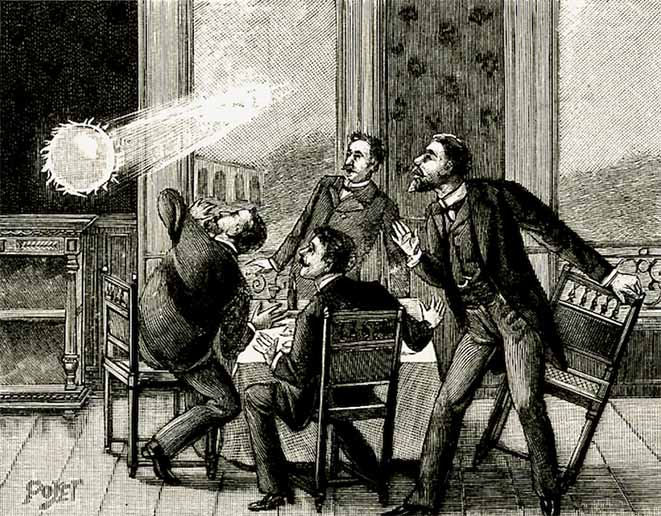
Ball Lightning
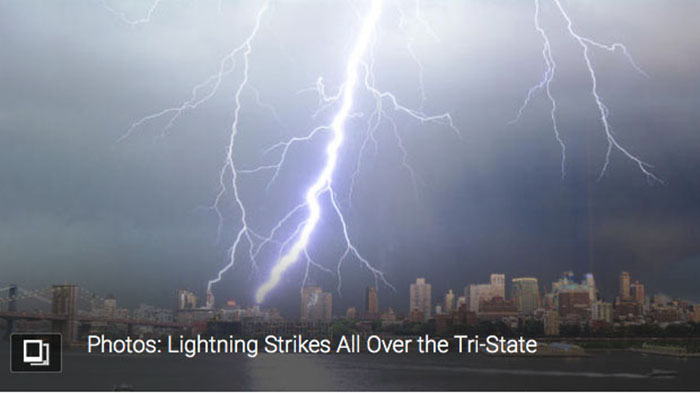
The Shape of Lightning in the Grids 2018
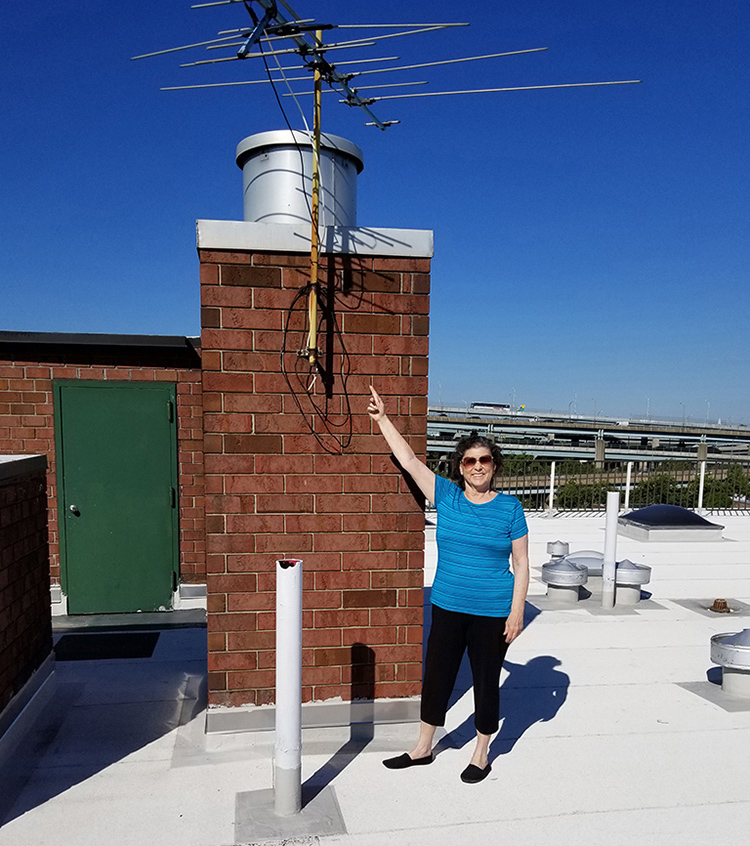
When Lightning Struck the Roof Just Above My Apartment - June 2018